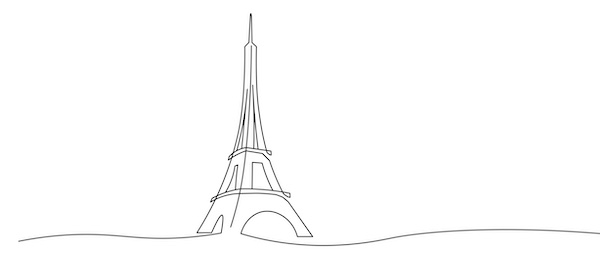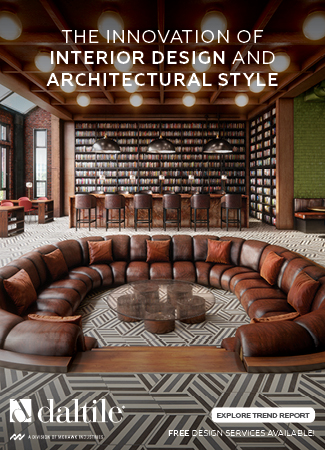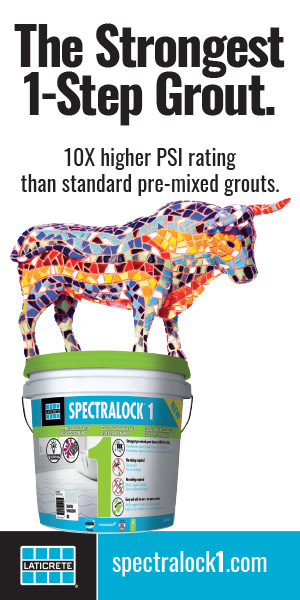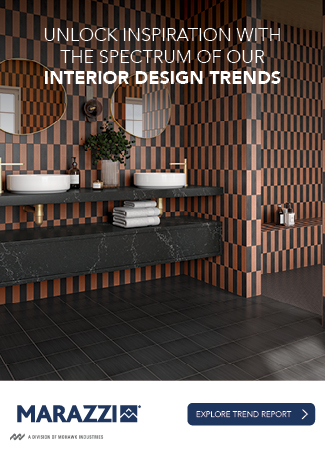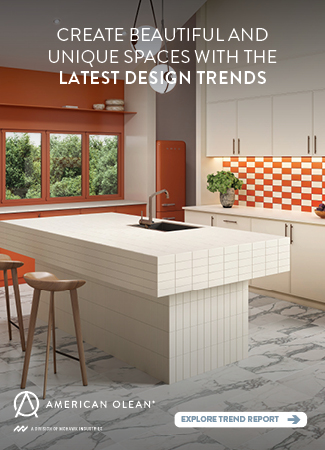Twenty two years ago my wife Layl and I traveled to Paris and Spain on our first trip to Europe. We spent a month looking for tiles, art, and pastries. We have been back to Europe multiple times with the same mission: a scavenger hunt to find tiles and photograph them, to find out more information about each installation, and to draw inspirations from the tiles.
This past February we were on a mission to document tiles with videos telling a modern story with historical information about each installation, and to recreate tiles from my travels, bringing them back to life in the Clay Squared tile lines. We had a great tool at our disposal, Paris and the Legacy of French Architectural Ceramics by Susan Montgomery and Susan Tunick, published by Friends of Terra Cotta Press in 1997. The book describes and identifies 130 historic tile installations throughout Paris, complete with a map to find them.

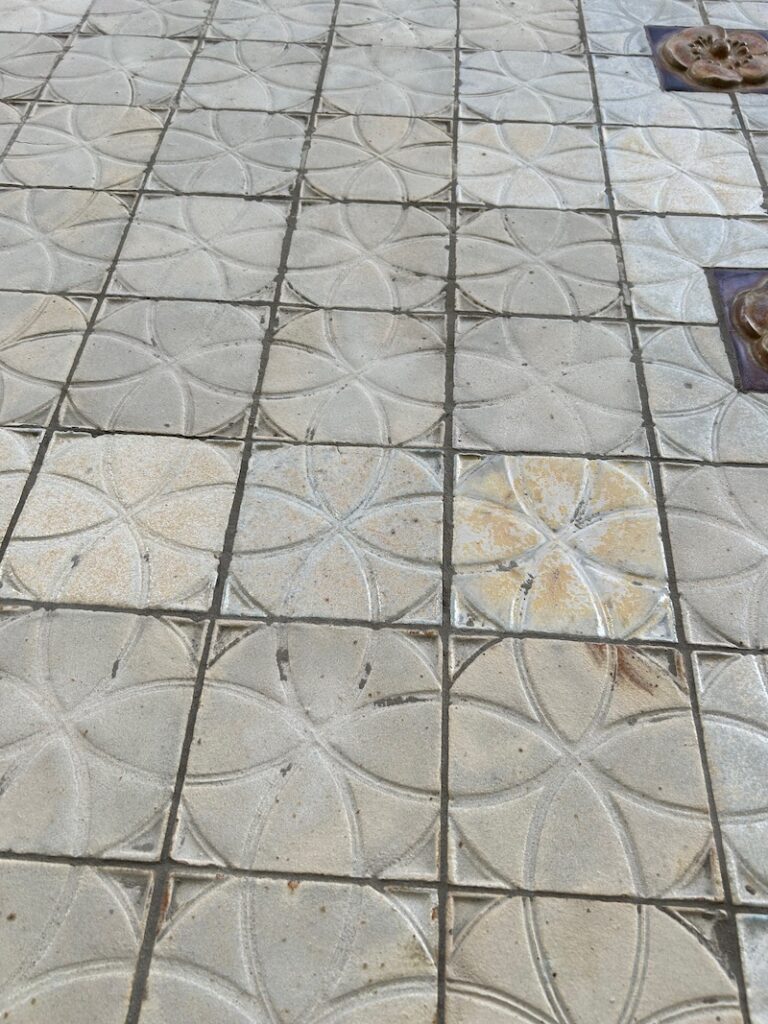

Like tile of chocolate
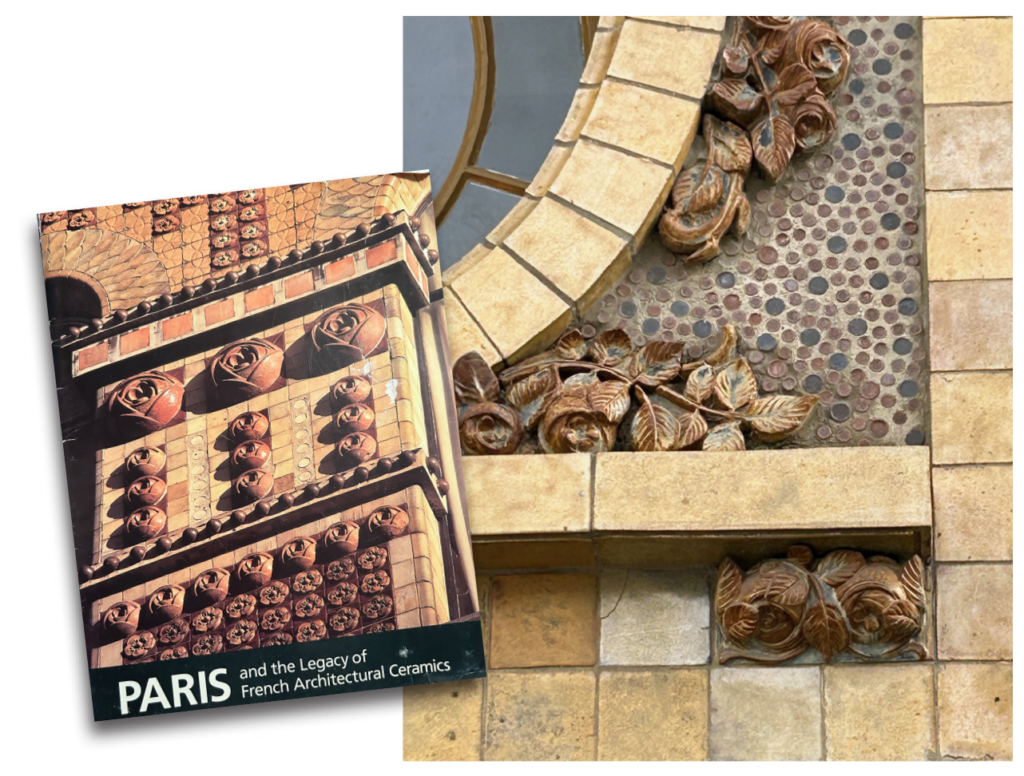

The cover of the Paris and the Legacy of French Architectural Ceramics has always been an inspiring image of a tile installation. When we first arrived in Paris in 2002 we were having breakfast in our hotel and I asked the waiter if he knew about this tile installation. My French was bad and still is. He looked at the image and asked “Is that chocolate?” We laughed and realized we were on our own to search out these tile gems, but thanks to this waiter we always referred to the project on the cover as the “chocolate tiles.”
This cover tile installation is actually the Campagne Premiere facade and is probably one of my favorites. It was created by prolific tile maker Alexandre Bigot in 1911. Located at 31 rue Campagne Premiere, Paris, this installation has it all including high-relief floral roses projecting out around 9″ from the facade, and many low-relief florals and ceramic balls that project 2″ – 4″ from the facade.
When you walk up to the building, you feel invited by all caramel chocolate tones of the textured impressed designs that make floral patterns when connected together. These also showcase a full range of color variations in the square and scallop-shaped tiles. It is a feast for the eyes.
Two things strike me about this facade: the complexity of the art tiles that are clearly handmade, as they are not perfectly rectified but very well organized and designed, and the tile setting craftsmanship. The craftsmanship is excellent at making the installation look like a chocolate store where you can come and pick out your favorite treat. Amazingly enough, all the tiles are still in excellent condition: no chips or broken tiles anywhere. And fun fact: the famous American artist Man Ray had lived in this building back in the 1920s.
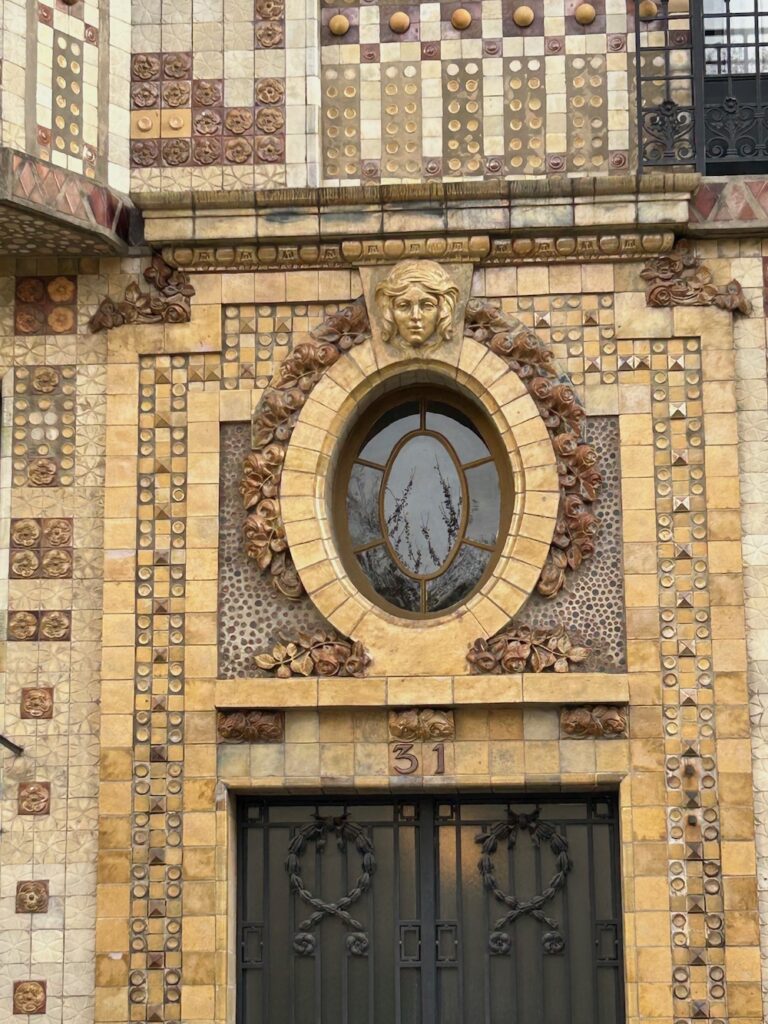

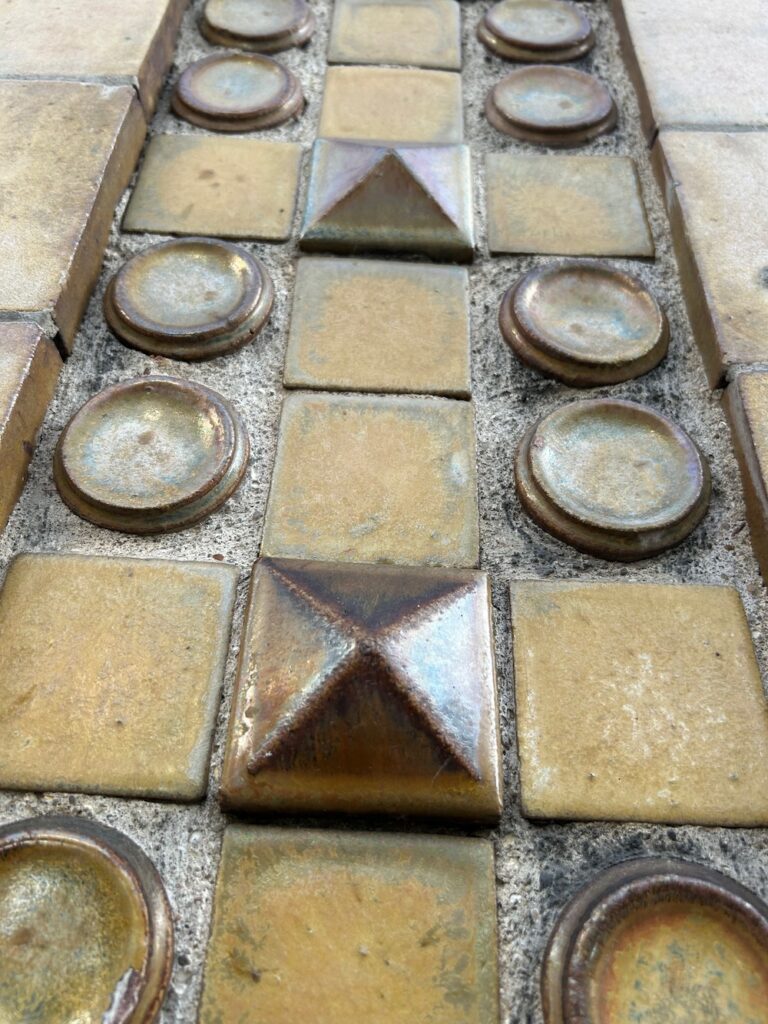



The “Paris Alhambra”
Our research did not reveal specific names to the buildings other than the street names, so we usually create names for them. Another building we found on this trip we called the Paris Alhambra. The tile facade that wraps the building at 185 rue Belliard by architect Henri Deneux was built in 1913. It features dynamic tile design patterns that are reminiscent of Islamic tile designs you would see at the Alhambra in Spain, but in super large scale.
The project uses only a couple sizes of tiles: 5″x5″ tiles placed in an unusual pattern that leaves̀ large grout lines of many inches, making you wonder how this unique tile facade was achieved.
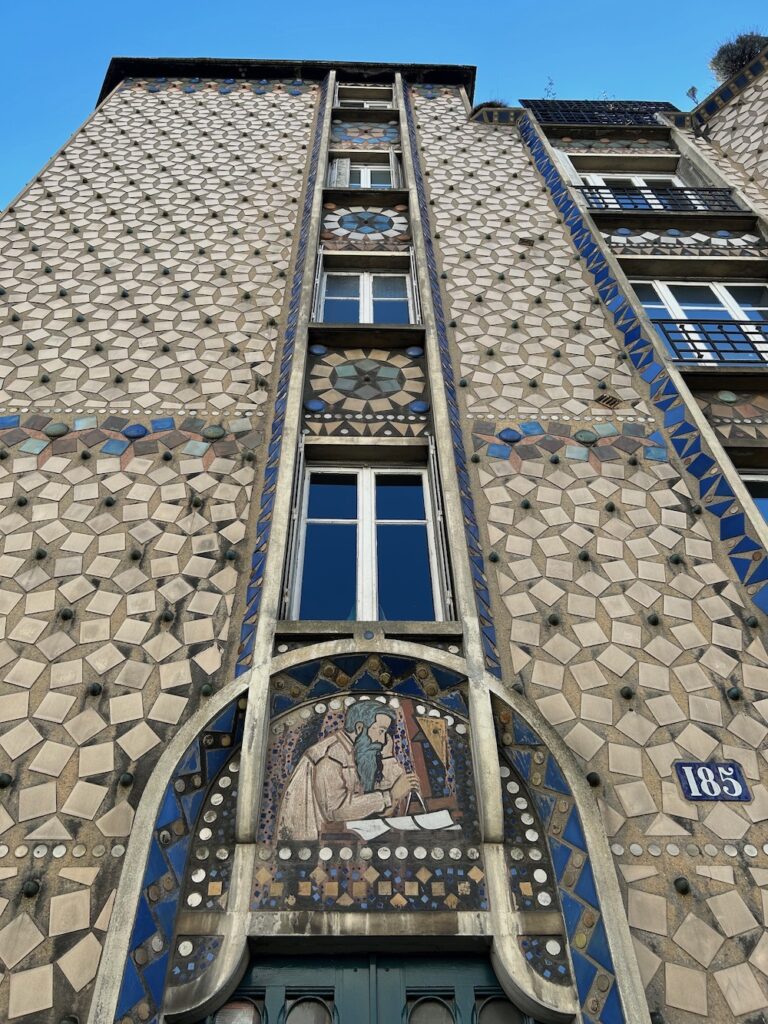

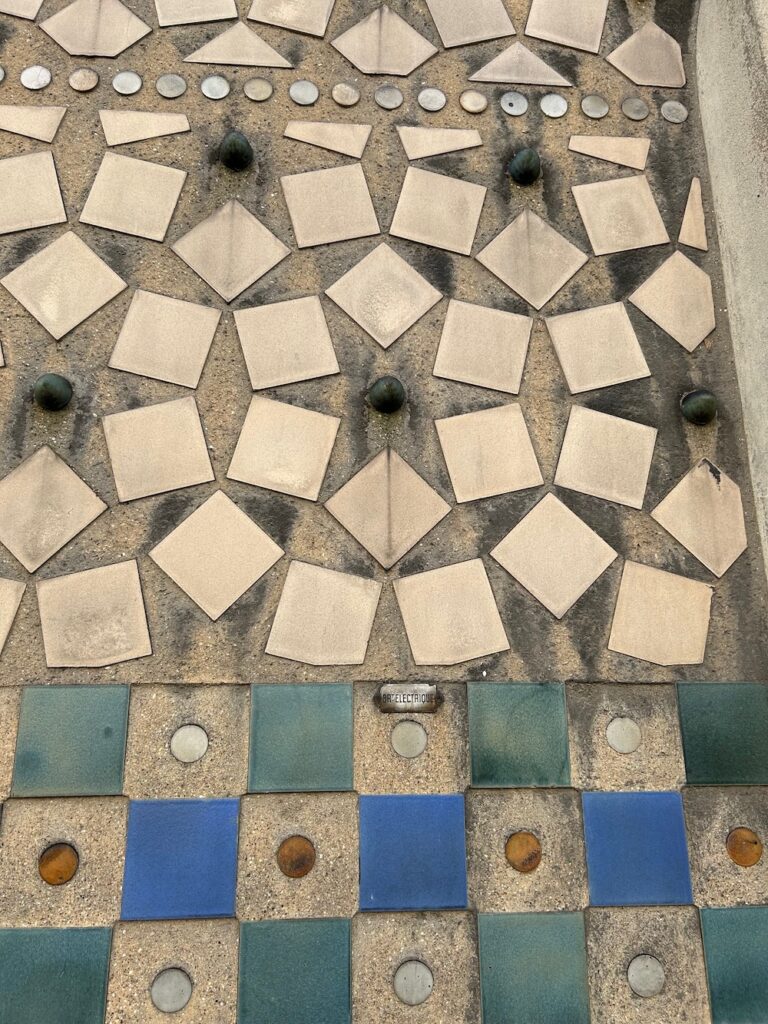

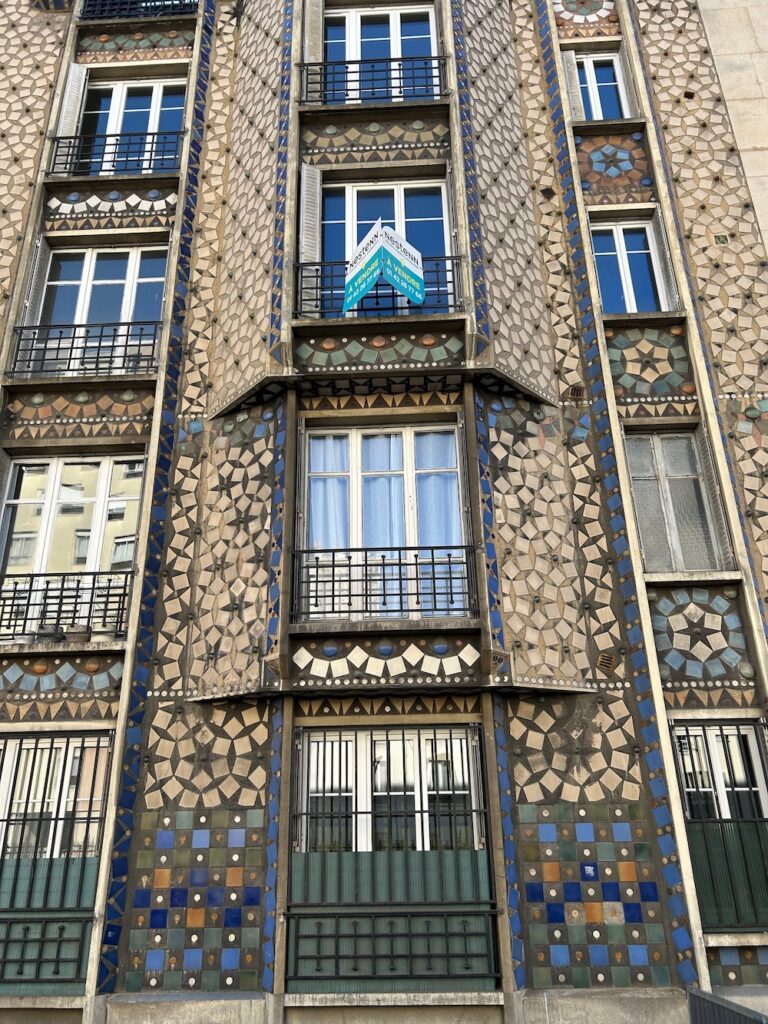

My main question goes out to the tile setters. Traditional grout lines max out at 1/4″, and a 1/2″ is a huge grout line. This one had spacing of over 8″ in many places. We are looking for our tile setter friends to chime in and tell us your thoughts on how this was installed. The tile patterns are precisely spaced out equally, and line up from horizontal to vertical throughout the facade. This seems like it would have taken an amazing feat of skill and patience to install this tile design.
What’s more: because of the tile design, there are many optical illusions that give the viewer multiple shapes to view, from stars to circles. There are dimensional cone tiles protruding from the wall that look metallic, but they are definitely made of clay. This installation was located on an unassuming street, but it was a sparkling display of creativity and craftsmanship.
Choisy showroom
The Choisy showroom of the earthenware tile factory back in 1890 is a time capsule gem of the Paris Art Nouveau tile world. It includes over a dozen large-scale handmade painted tile murals and over 20 tile floor rugs featuring encaustic tiles and mosaics.




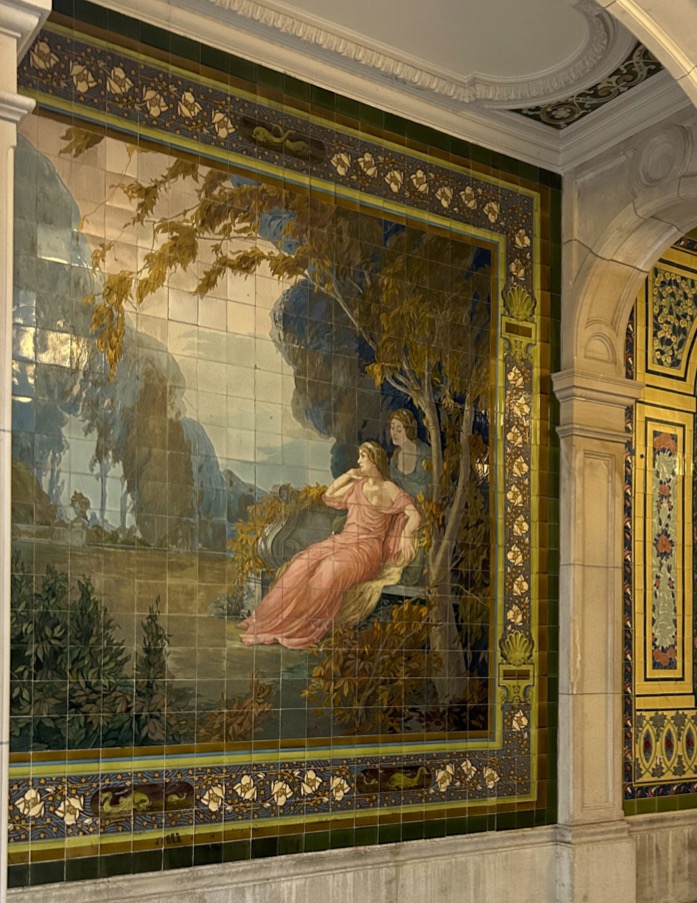

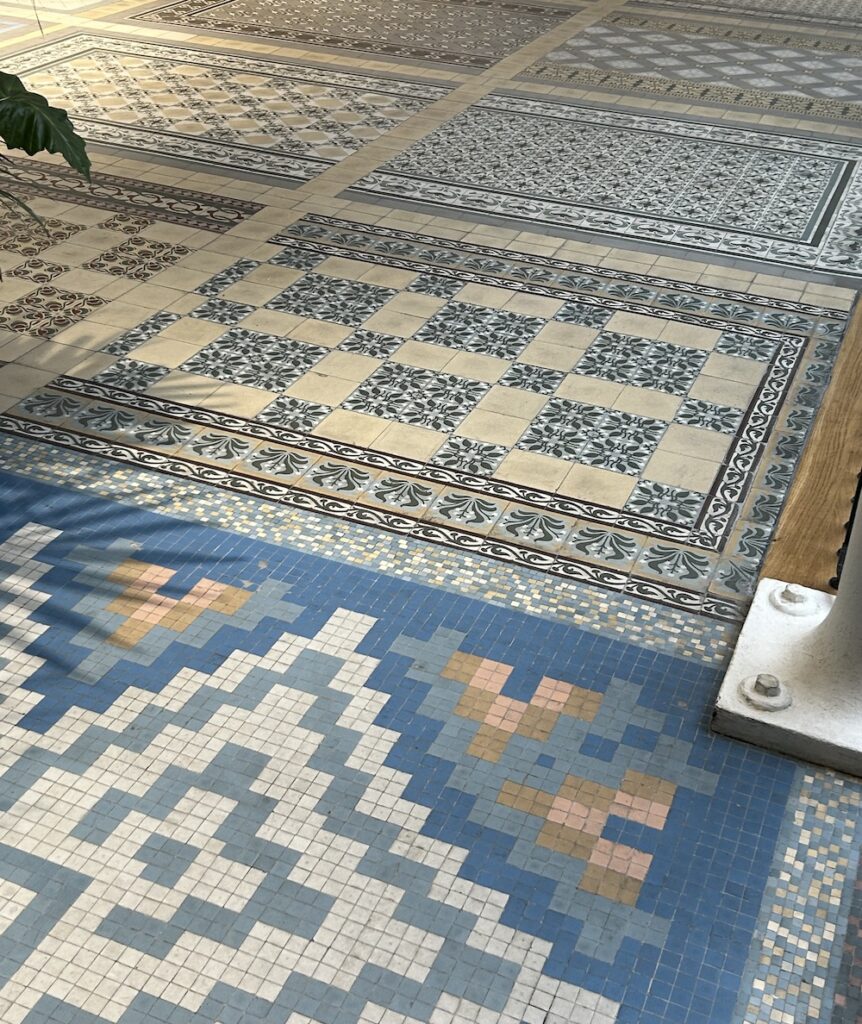

We first found this tile location in 2002, on the last day of our month-long trip, and we were scraggly from our travels. From the street, we gazed in awe at the murals inside the gates. When a well-dressed woman who was leaving asked in French what we were doing, I told her I was a tile maker. She realized we were Americans and she was too. Letting us in, she said there were many more murals inside, and went to ask her boss if it was ok for us to see them. Ascending to the second floor, we saw a group of super models on a go-see. Our new friend asked her boss if we could view the tiles in the building. Her supervisor glared at us, looking us up and down. I could read her lips from across the room clearly saying noooo!! Our new friend clipped as fast as she could in her stiletto heels across the tiled floors and told us to leave immediately. I started taking photos and running to get out of the building. We laughed so much from the experience of being chased out by Parisian supermodels.
Twenty years later, it has been transformed into a business school with a gate open to all. We got in and made a video of the amazing Art Nouveau tile mural installations, all in mint condition. We’ve seen many of the designed floors and similar murals all over Paris in the entryways and some of the buildings we had been hunting for. We realized many must have come from this tile showroom.
Tile exploring a city has been a great way for us to discover Paris and many other cities, crisscrossing neighborhoods and streets that only locals travel. We get to see how Parisians live and enjoy their city without the hustle and bustle of the tourist trade, discovering dozens of pastry shops and restaurants. A couple of musts: wear really good shoes and be prepared for quick weather changes. And walking 10 to 15 miles a day (we estimate over 200 miles in three weeks) allows us to offset our pastry intake. It is a fabulous way to travel! n


Josh Blanc
Josh Blanc, at [email protected], is a tile artisan and co-owner of Clay Squared to Infinity. Josh’s handmade tiles are featured in homes, public spaces, and businesses all over the world He serves on two boards: Tile Heritage Foundation and the Northeast Minneapolis Arts District. Josh has been writing articles about tile, art, and artists in numerous national and local publications for 25 years.


